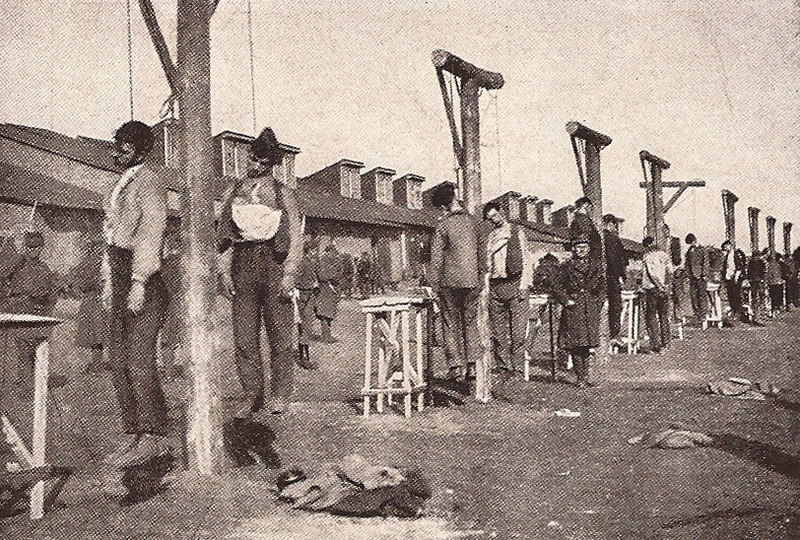The Austro-Hungarian army committed various types of war crimes, ranging from the use of illegal warfare agents and inhuman treatment of prisoners of war to brutality towards civilians. Villages and towns were burnt to the ground, hostages were taken and shot, there was forcible deportation, internment, forced labour, mass executions, rape and pillaging. The Habsburg military courts also sentenced tens of thousands of people to death. It only took a careless comment, a spurious suspicion or a denunciation for an innocent civilian to end up on the gallows.
